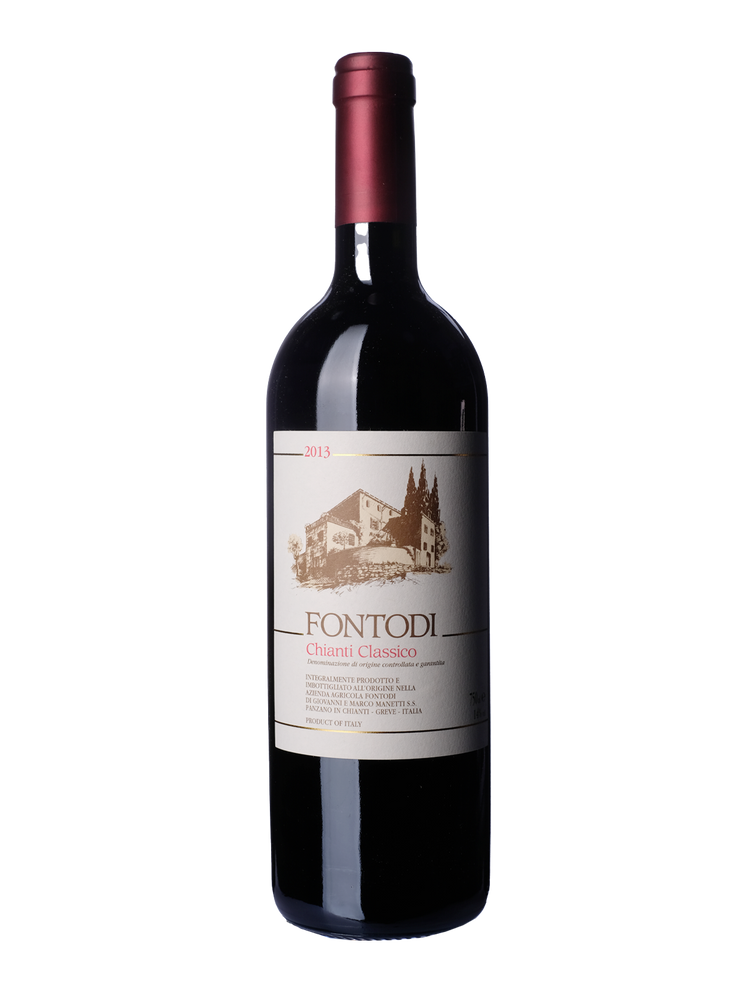I met Jarkko Peränen at a wine symposium in Tampere, Finland. He’s Finnish, and initially went to Italy for harvest, but stayed on to work with a small producer in Chianti Classico. In 2002 he bought a farm in Panzano, in the heart of the Classico, region with Josephin.
Jamie: How long have you been making wine in Tuscany now?
Jarkko: Almost 20 years here, since 2002. But I arrived in 1997.
What bought you here? Were you both from Finland, or just you Jarkko?
Jarkko: I’m from Finland, Josephin is from Germany. I was studying in Holland and I came here with Italian friends for harvest. I got stuck here.
Josephin: I’m from a brewing family. I got interested early on in wine, first by drinking, but then in agriculture. I met Jarkko here in Italy and we started to work together.

Did you start Candialle together?
Josephin: Yes. This was always a winemaking place but like most properties here they sold the grapes. When we arrived there were five hectares planted, we took out three straight away, they were old vineyards from the 1970s, not only Sangiovese but all sorts of things. So we started with just two hectares. We grew slowly, and now we have 9.5 hectares planted.
How do you divide your labour? Do you both do everything?
Josephin: It’s a small place and one has to be really flexible. It is good to be able to substitute each other.
Jarkko: I do most of the tractor driving.
Josephin: I’m not so keen on it, but because Jarkko has bad hay-fever so I do the grass cutting.
What was it like making the first wine from your own property? Were you nervous?
Josephin: We started in 2002 which was a terrible year. It rained for the whole summer. And 2003 was also not easy, it was a super-hot year. Everyone was excited because the wine had high levels of alcohol, but the wines were just not balanced. We didn’t officially market our wines for the first two years because the vintages were so difficult, so we started properly with 2004 which was a really nice vintage.
What was it like being outsiders in Tuscany? Was it difficult?
Josephin: Tuscany has always been very international. We were welcomed here.
Jarkko: Chianti is particular. Sometimes people refer to it as Chiantishire because there are so many foreigners here. Then of course a lot of people are happy that others are investing in the place: it used to be poor. This has been changing a little bit, the truck driver who comes to pick up a pallet might make a comment about foreigners. It has become more normal to say things like this since the rise of populism. I guess it is the same everywhere in Europe: those people who didn’t say anything before, now they feel free to say it.
The farming
In the vineyard, Jarkko and Josephin have taken a different approach. When they arrived, the vines were planted in a way typical for the region, quite widely spaced and in a bilateral cordon. This is where the vine has two permanent arms growing out from the trunk. They have replanted much of it, with the vines much closer together, and using an old system called albarello. This translates as ‘little tree’, and the vines grow with two or three branches sticking up, with a spur on each.

Josephin: Planting Sangiovese in albarello was pretty unusual here, but now it is a bit more common. These are bush vines but they are trellised and planted in rows so we can work with the tractor. Most of them are cut like fruit trees, spread out like a fan.
Jarkko: Here they call it the candelabra. There is a spur with two shoots on each arm.
Another change they have adopted is that instead of using herbicides to keep the soil free of weeds, they grow cover crops in the rows, and then use a mechanical weeding device under the vines themselves.
Jarkko: We use spontaneous grass in the rows, and under the vine we work the soil mechanically. In the row we don’t till at all, except for when we spread our own compost and have to integrate it into the soil. So where we have put the compost in the autumn we add barley, mustard or clover depending on the soil. This happens only once every three or four years. We spread the compost only every second row, so every row has natural grass cover for 6-8 years before we touch it again.
What are the viticultural challenges in your region?
Jarkko: If you think of the climate, we can’t complain. We have some years when it rains very little and drought is a problem. Every ten years we get a rainy year, but it is nothing compared with Champagne. It is a good place for viticulture.
Josephin: Although organic viticulture wasn’t practiced here until 20 years ago, it could have been done. In the 1970s people were happy about growing lots of quantity, the idea of sustainability and biological farming only came later.

Most of their vineyard is Sangiovese, a grape variety where you can find a big difference between clones, which have different characteristics in the vineyard and in the final wines.
Jarkko: Some of the older Sangiovese clones that were selected in the 1970s were extremely productive. People planted productive clones on rootstocks that were vigorous. There were lots of grapes that hardly ripened. Then better quality clones started to come in. There are huge differences between them, even at the technical level: even with the same production, one clone might have a pH hugely lower [which means the grapes have higher acidity and the wines are more stable during production]. These quality clones are the future of Sangiovese.
In Piedmont they plant Nebbiolo in the good places and Barbera in the others. Here Merlot tends to be planted in places where Sangiovese doesn’t thrive. But I think the future is to find the complementary local varieties.
Josephin: We have 90% planted to Sangiovese, and then small patches of other varieties like Canaiolo, Malvasia Nero, Cabernet Franc, and then in the wetter patches we still have half a hectare of Merlot. Sangiovese likes it dry and hot.
Let’s move to the cellar. What is your approach to winemaking?
Josephin: We take a pretty simple approach. Our cellar is built so we can drive on the roof. We harvest into small crates, bring the grapes on the roof, where there is a destemmer. We destem the grapes then fill [our stainless steel and cement] tanks. This means we don’t handle the grapes more than necessary.
What is your approach to extracting the colour and flavour from the grape skins during fermentation?
Jarkko: Sangiovese takes some work to get something out of it. We do both pump overs and punch downs. We have experimented with longer fermentations, but the difference between 30 days and 75 days is not massive. It all depends on the material you start off with. Our grapes are quite concentrated.
I remember in Finland you showed pictures of spherical ceramic Clayvers that you were using for maturing the wines: do you still use those?
Josephin: We have five Clayvers so it is a small part of our production.
Jarkko: They are for ageing. Part goes in the cement tanks and part goes in barrels and the Clayvers.

Do you like the results?
Jarkko: Yes they are very good. They are totally neutral, but they breathe. It is like barrel ageing but without any oak influence.
In many respects your wines are natural. What is your view on the natural wine movement?
Jarkko: We drink the wines. To be considered part of the movement you have to be part of it. I don’t know if we fit in.
Josephin: We are too much old homies. The cancellation of the fairs last year was for us a nice change. We didn’t have to go everywhere.
The wines
I tasted through some of the recent releases. The MN 2016 Vino Rosso is a light, crunchy red with real drinkability. The 2019 Chianti Classico shows good Sangiovese typicity, but as well as the more savoury, spicy characters, there’s lovely fruit sweetness. La Misse di Candialle 2017 also has this great balance between savoury notes and sweet fruit, giving it approachability as well as seriousness. Mimas 2017 is matured in the ceramic Clayvers, and has real focus and elegance.
These are beautiful expressions of Sangiovese, the Candialle style has regional typicity, but also wonderful fruit expression giving the wines balance and drinkability.
They are pretty serious. It’s interesting to compare them with the Sangioveses of Mutilana from northern neighbour Emilia Romagna, which also have a lovely core of fruit, while retaining their varietal character.




